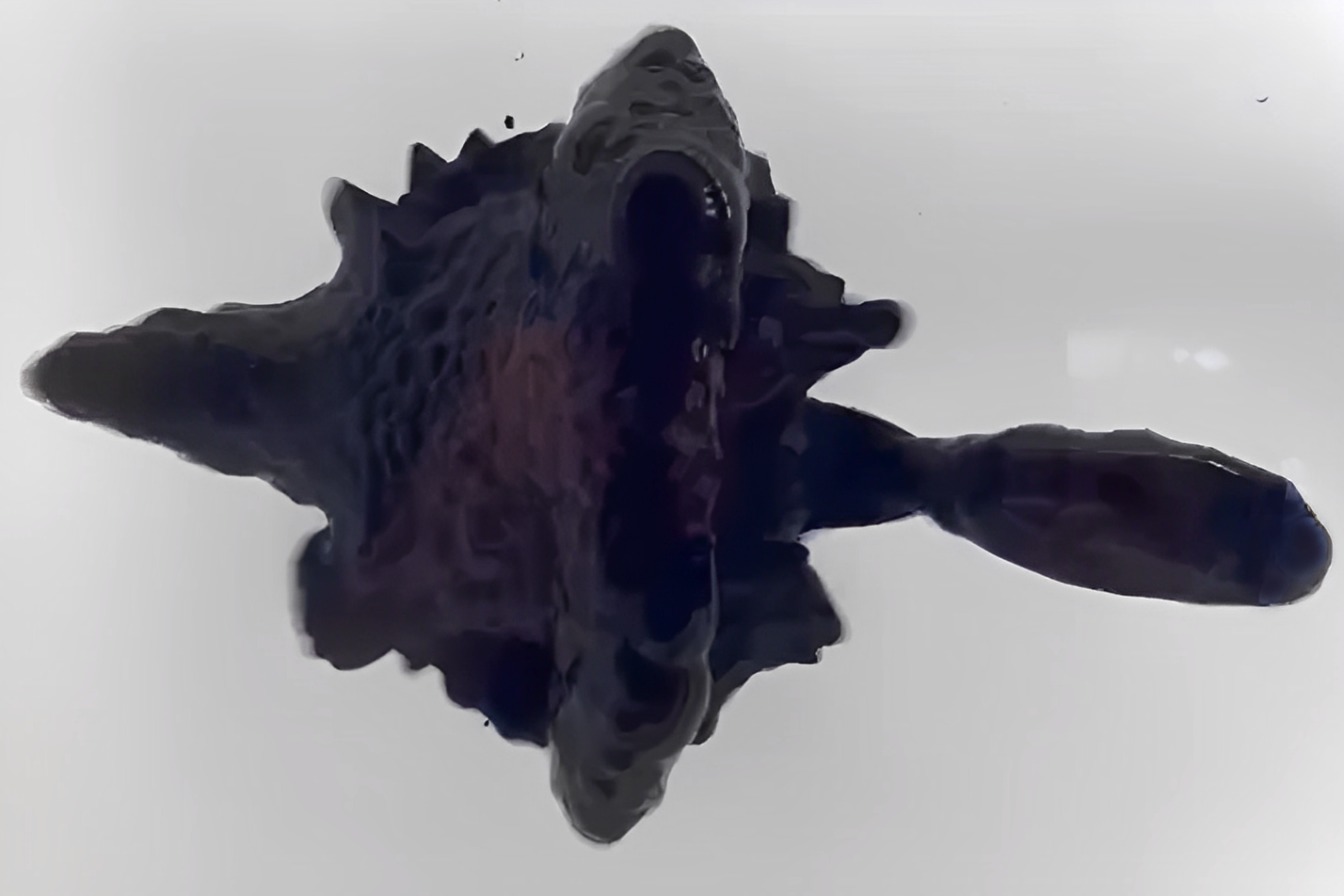Not many professors take movies from the Spider-Man Universe as their source of inspiration. For Professor Zhang Li, however, the 2018 film Venom, the story of a symbiotic organism that can take a liquid-like form, was more than just a bit of fun. A member of the Department of Mechanical and Automation Engineering at The Chinese University of Hong Kong, his studies focus on soft robots – tiny machines made of soft, pliant materials that can do all sorts of things traditional robots can’t.
Soft robots, or soft machines, are particularly good at moving around inside enclosed environments such as the human body – they lack the hard components that can damage tissues, and the robots Professor Zhang is developing can deform themselves into a variety of different shapes – making them highly promising candidates for applications such as targeted drug delivery within the body. Inspired by various forms from nature, he’s previously developed minuscule microrobots that can swarm like bees; a “slimebot” made of a hydrogel-based material; and origami soft robots, which can change shape under the influence of magnets. The ultimate goal is amoeba-like soft machines that can change into any shape they want.
And that’s where Venom comes in. One of his latest projects, a collaboration with Professor Carmel Majidi from Carnegie Mellon University in the US, is to make soft robots made from ferrofluids – microscopic particles of a magnetic material suspended in a liquid, so that the liquid itself is magnetic.
“The material was developed by NASA in the 1960s, so it’s not that new,” says Professor Zhang. “You can call it smart material: when you apply external stimuli, such as a dynamic magnetic field, it shows a response. Ferrofluid can dance – it can move like a living creature. I thought: if we can control that dance, perhaps we can utilise it as a kind of soft machine.”
“It was inspired by Venom. Can we use ferrofluid like Venom to coat a non-magnetic material? Then we can manipulate a non-magnetic material using a magnetic material.”
Specifically, their work exploits the potential of the three different potential so-called wetting states of ferrofluids. Wetting is a measure of a liquid’s ability to maintain contact with a solid surface, and the potential wetting states of ferrofluids can each be used to control the robots in different ways: in a low-wetting state, they can move in a variety of ways, as well as changing shape, splitting and merging; in a high-wetting state, they act like liquid cilia, protrusions that can be used to control fluid movement such as blood flow; and in a total wetting state, things get really interesting.
“We try to understand how ferrofluid will interact with different types of surface,” says Professor Zhang. “To coat something, you need total wetting behaviour. If we use some kind of gel-like material, even if it’s non-magnetic, then after coating, you can manipulate it.”
“You can have a liquid capsule, with two different types of liquid: the ferrofluid is the outer shell and inside is the drug. The ferrofluid will not wet the drug; it’s like having a layer of oil and a layer of water. It means we can realise a liquid capsule for drug delivery. It’s not like a solid capsule: you can deform it into any shape, so it can move through narrow structures.”
Pushing the limits of deformability in a different direction, he has also developed a new ferromagnetic silicone elastomer with three-dimensional deformability, alongside his departmental colleague Dr Jin Dongdong, as well as Professor Zhang Jiachen from the City University of Hong Kong and Professor Wang Liu from the University of Science and Technology of China. Short for “elastic polymer”, an elastomer is a rubber-like material that can be extensively stretched out but will return to its original state afterwards. Complex 3D deformations are achieved by encoding the magnetisation inside the elastomer. And again, his invention is inspired by nature.
“Previously, when you apply force to a material, it will be deformed, but only in a single mode,” says Professor Zhang. “By using a smart material, we can create swelling and contraction with external stimuli. When you apply a dynamic magnetic field, you get multiple modes of deformation. And when you can control the deformation, you can manipulate the fluid. It’s like a fish’s fin: when you move it, you manipulate the liquid.”











